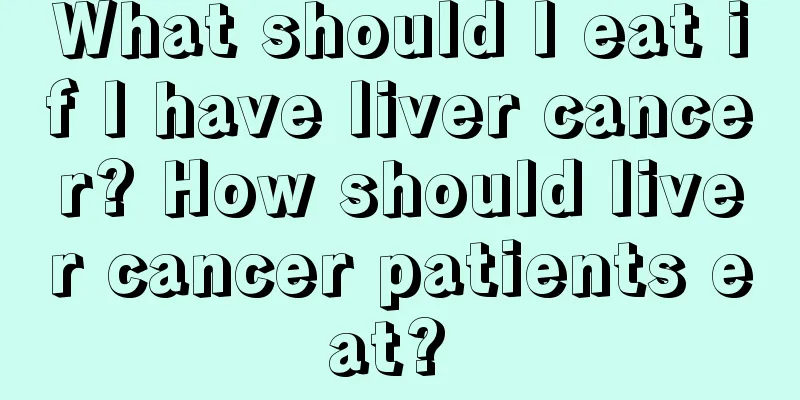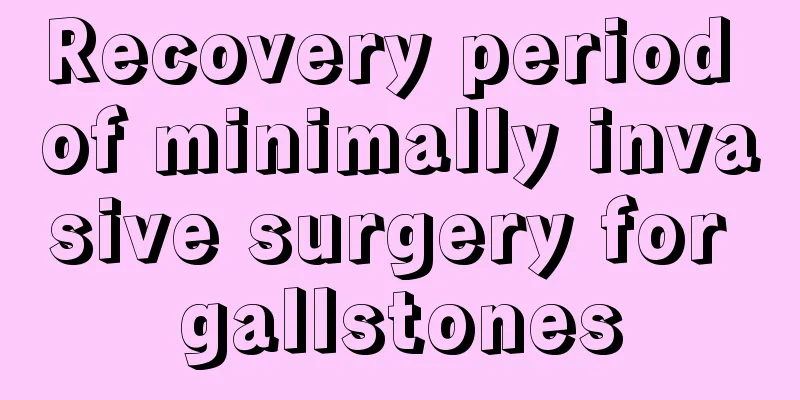What are the serious symptoms of acute cholecystitis

|
Cholecystitis is a relatively common and frequently occurring medical disease. Acute cholecystitis has an acute onset, develops rapidly, and is often associated with gallstone attacks, causing unbearable abdominal pain. In this case, you need to go to the hospital immediately to avoid causing shock to the patient. In addition, cholecystitis can also be chronic and is not easy to cure. If not treated with care, it will recur and cause great pain to the patient. Acute cholecystitis is a serious inflammation that mainly causes the following symptoms in the body: 1. Abdominal pain: Abdominal pain is the most common symptom in patients with acute cholecystitis. In the early stages of acute cholecystitis, patients may experience persistent pain in the middle and upper abdomen and right upper abdomen. If the gallbladder duct is edematous due to inflammation or is impacted by stones, severe colic may occur, and there may be radiating pain in the right shoulder and back area. Before the onset of the disease, there is often a history of greasy diet or long-term fatigue and other inducing factors. The pain often occurs at night when lying down or changing body position. 2. Gastrointestinal symptoms: Most patients with acute cholecystitis have gastrointestinal symptoms such as nausea and vomiting. Some patients also have symptoms such as aversion to greasy food. About 10%-15% of patients have mild jaundice. 3. Fever: Most patients with acute cholecystitis have infection, so they have fever symptoms in the early stage. The body temperature is generally 38-39℃. If the gallbladder is gangrenous or perforated, chills, high fever and systemic poisoning symptoms may occur. 4. Systemic symptoms: Due to fever, patients may experience fatigue, dizziness, general discomfort and other symptoms in the early stages, which require early attention. complication 1. Gallbladder abscess and hydrops When cholecystitis is accompanied by persistent obstruction of the cystic duct, gallbladder abscess may occur. At this time, symptoms worsen, and the patient will show high fever and severe right upper abdominal pain. Perforation is very likely to occur, and emergency surgery is required. If the cystic duct is blocked for a long time and there is no bacterial infection in the gallbladder, it may be complicated by gallbladder hydrocele or mucocele, and the gallbladder may be enlarged. Clinically, a painless or slightly tender swollen gallbladder can be felt in the right upper abdomen, which is suitable for surgical treatment. 2. Gallbladder perforation When the gallbladder is perforated on the basis of gangrene, the perforated part is often surrounded by the omentum. If it is not surrounded, the mortality rate can reach 30%. 3. Bile fistula Gallbladder inflammation can cause local perforation, forming cholecystoduodenal fistula, cholecystocolonic fistula, cholecystogastric fistula, jejunal fistula, cholecystobile duct fistula, etc. |
<<: Can loose teeth be repaired? How to fix it?
>>: What should I do if I faint at the sight of blood?
Recommend
Causes of epilepsy
When it comes to diseases like epilepsy, I believ...
How can we detect lung cancer as early as possible? Several common diagnostic methods for lung cancer
X-ray examination can reveal the location and siz...
Is the cure rate of nasopharyngeal cancer high? How long can one live?
Is nasopharyngeal cancer treatable? How long can ...
How to make your own aloe vera gel
We all know that aloe vera gel has a good beauty ...
What to do if your skin is dry
Many people have dry skin problems. Dry skin in y...
Is lung cancer contagious after physical examination? Lung cancer patients should pay attention to 5 things
Is it contagious to use the same bowls and chopst...
Chinese patent medicine for nourishing yin, calming the liver and suppressing yang
The liver is the largest organ in the human body,...
Be careful of these 6 Chinese medicines that may hurt your eyes
Looking at the computer or TV for a long time wil...
Elderly male smokers who lose their voice should be alert to laryngeal cancer
Mr. Liu is a true writer. He has published more t...
What's wrong with the pimples on my mouth
No matter what the cause is, acne represents exce...
4 lifestyle health care methods for prostate cancer patients during the recovery period. Recovery methods for prostate patients
We are all familiar with the word cancer, and pro...
Could headache be caused by cervical spondylosis?
Anatomical studies have found that the 1st to 4th...
How to wash rust off clothes
If iron is exposed to humid air for a long time, ...
What fruits are good for prostate cancer
There are more and more male diseases now, especi...
What should you pay attention to when you fall and injure your coccyx
The coccyx is a small bone in the tail of human b...









